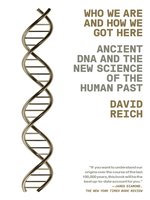-

A surprising new description of how Homo sapiens originated in Africa and spread around the world.In his first book, Reich (Genetics/Harvard Medical School) describes the revolution in his specialty, genomics, the branch of molecular biology that analyzes our genes, units of DNA that transmit hereditary information from parent to offspring. Since 2001, when scientists sequenced the human genome for the first time, technology has massively reduced the cost of the procedure. At the same time, researchers have become incredibly adept at extracting DNA from bones as old as 400,000 years. Readers who pay close attention will understand Reich's explanation of what this reveals. As generations pass, strings of DNA in the genome split and recombine, and errors (mutations) appear in individual genes. Comparing one genome to another reveals the relationship between populations more accurately than comparing bones. Mutations appear at a regular rate, allowing researchers to measure time elapsed as evolution proceeds. "Since 2009," writes the author, ."..whole-genome data have begun to challenge long-held views in archaeology, history, anthropology, and even linguistics--and to resolve controversies in those fields. The ancient DNA revolution is rapidly disrupting our assumptions about the past." Most agree that migrants from Turkey brought agriculture to Europe about 8,000 years ago. They once agreed that these migrants brought Indo-European languages spoken throughout most Western nations, but the studies in genomics reveal that the languages arrived with later migrants: a "ghost population" from the Russian steppes who also moved east and contributed genes to American Indians. Throughout the book, Reich includes numerous timelines, graphs, maps, and diagrams to assist readers in visualizing his material, but those who are not scientifically inclined may find the narrative difficult to follow--though ultimately rewarding.Not an easy read, but an eye-opening account of significant scientific advances that throw a spectacular, often unexpected light on human prehistory.
COPYRIGHT(2018) Kirkus Reviews, ALL RIGHTS RESERVED. (Online Review)
-

April 1, 2018
"Population mixture is central to human nature," writes Reich (genetics, Harvard Med. Sch.), but politics, historical injustices, Western advantage, technical issues, and local sensitivities affect the conduct, interpretation, and dissemination of ancestral genomic research. The field changes rapidly, perhaps even rendering portions of this book inaccurate before its release. We do know our ancestors repeatedly interbred with other hominids, at widely separated times. What ancient DNA analysis also reveals is human history punctuated by multiple migratory waves, sometimes of people returning to areas they departed millennia before. Vanished prehistoric "ghost populations" manifest themselves today as segments of our chromosomes. Socially powerful men of the past--whether the Bronze Age or the era of colonialism--are overrepresented in our present-day genomes. Reich acknowledges the concerns of those who fear talk of biological differences between populations will lead to an upwelling of racism based upon genetic determinism. Unfortunately, his argument that scientists can steer discussion toward informed inclusion is unconvincing. VERDICT Geneticists, archaeologists, and linguists will appreciate this detailed work, but most readers will find Adam Rutherford's A Brief History of Everyone Who Ever Lived: The Stories in Our Genes more appealing.--Nancy R. Curtis, Univ. of Maine Lib., Orono
Copyright 2018 Library Journal, LLC Used with permission.
-

March 15, 2018
This is the story of what, enabled by technological quantum leaps, recent genomic research, from 2009 to the present, has already revealed about the deep past of the human species, of which modern humans are a subgroup. Perhaps the most well-known discovery has been that that other subgroup, Neanderthals, interbred with modern humans. Rather less well-known but just as earthshaking is the discovery of another human subgroup, the Denisovans, and the possibility that yet more will be discovered. The three sections of researcher Reich's summary report on genomic analysis of ancient DNA lay out how the gleanings of such research reveal the variety and the dispersal of prehistoric humans throughout the world, how ancient DNA discloses humanity's development in different parts of the world, and the implications of ancient DNA research for the future, especially for dispelling race-based conceptions of differences among modern humanity. Though probably not the easiest reading of the year, Who We Are and How We Got Here may be the most rewarding for those enthralled by humanity's long prehistory.(Reprinted with permission of Booklist, copyright 2018, American Library Association.)
-
Colin Renfrew, Disney Professor of Archeology Emeritus, University of Cambridge
"In just five years, the study of ancient DNA has transformed our understanding of world prehistory. The geneticist David Reich, one of the pioneers in this field, here gives the brilliantly lucid first account of the resulting new view of human origins and of the later dispersals that went on to shape the modern world,"
-
Molly Przeworski, Professor of Biological Sciences, Colombia University
"Reich's magisterial book gives a riveting account of human prehistory and history through the new lens provided by ancient DNA data. The story of human populations, as he shows, is ever one of widespread and repeated mixing, debunking the fiction of 'pure' populations."







